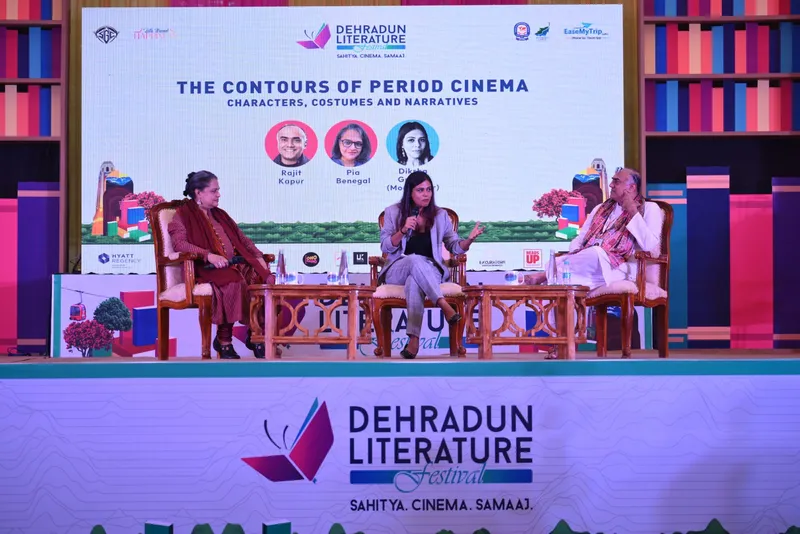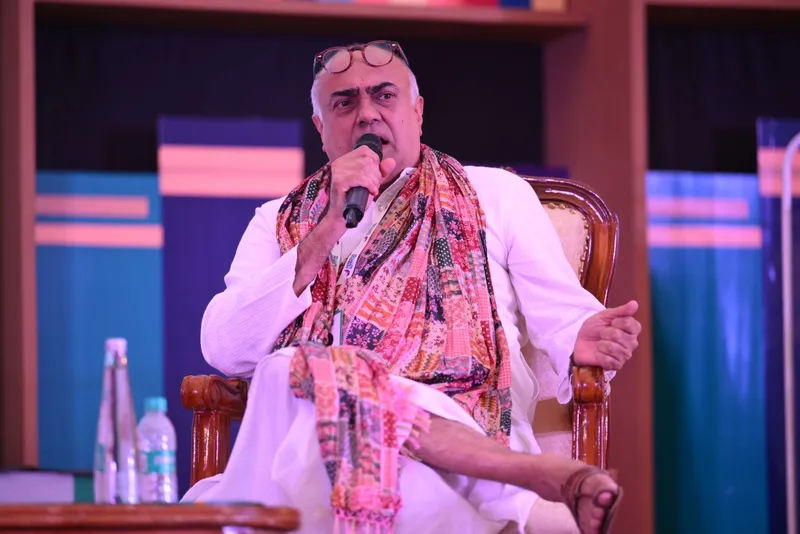How characters, costumes, and narratives form the crux of period cinema
Veteran costume designer Pia Benegal and actor Rajit Kapur highlight the contribution of costume designing in nuanced storytelling.
From Mughal-e-Azam to Bajirao Mastani, period dramas have evolved into more than just historical narratives. They have become stories that delve deeply into character development and have entered the consciousness of viewers. As such, character development plays a significant role in driving the narrative forward.
In this context, costume design is integral in setting the historical backdrop and enhancing the depth of the characters. It allows viewers to connect with the time, place, and culture of a narrative while deepening their understanding of the characters.
Pia Benegal, who has worked across television and films for the last three decades, has been instrumental in elevating the craft of costume design. Some of her notable works include The Making of The Mahatma, Mujib: The Making of a Nation, Aligarh, Bose: The Forgotten Hero, Mammo, and Zubeidaa.
Interestingly, Benegal has worked closely with actor Rajit Kapur (of Byomkesh Bakshi and The Making of The Mahatma-fame) in many projects helmed by her father, the legendary Shyam Benegal.
In a panel discussion titled ‘The Contours of Period Cinema: Characters, Costumes and Narratives’ during the 6th edition of the Dehradun Literature Festival, Benegal and Kapur discussed the ins and outs of costume design, emphasising its contribution to nuanced storytelling.

Pia Benegal and Rajit Kapur in conversation at the Dehradun Literature festival
Behind the scenes
The Making of the Mahatma, a documentary based on Fatima Meer’s book The Apprenticeship of a Mahatma, unfolds Gandhi’s journey from a young, relatively unknown lawyer to becoming the iconic leader of India’s independence movement.
The session took us back in time through a montage of clips that showcased this trajectory. Benegal pointed out that costume design includes everything—from sourcing, inventory, budgets, and a whole lot of planning.
“During the making of The Making of the Mahatma, it was quite a challenge because the budgets were limited. But what was expected was much bigger than that. All the costumes had to be made in India and then carted across to South Africa,” she says.
“We had to plan for any kind of eventuality or last-minute requirement.”
Trunks with pre-stitched costumes and uncut fabric were carried to the filming destination. Additionally, footwear, headgear, and other accessories were also packed.
Benegal created a grid of what Gandhi looked like in India and how his choice of clothes changed when he moved to South Africa. Once again, when the freedom fighter returned to India after 20 years, his life philosophy had transformed. Yet again, his costumes changed.
“When actors moved from one location to another, the requirement was different and figuring it out scene-wise was a task. But it was a rewarding film at the end of the day,” she adds.
Performance to transformation
Performing an iconic character like that of Mahatma Gandhi is undoubtedly a monumental task for any actor. Kapur, a versatile actor who has played roles in period dramas, considers it a huge responsibility.
Walking down memory lane, he recalls how makeup played a significant role in making him look the part. “We divided the makeup into five segments and a lot of research went into it because I look nothing like Mahatma Gandhi. They put wax behind my ears to make them appear larger. I have a deep cleft, which was again filled with wax and packed with makeup,” he says.
“They wanted to play around with my nose but it began itching..so Shyam (Benegal) asked them to let it be because I wouldn't be able to speak (laughs).”

Rajit Kapur at the Dehradun Literature Festival
In a nutshell, it's an amalgamation of costumes as well as makeup that helps with making a character appear as authentic as possible.
The power of accessories to make a character stand out cannot be undermined. Citing an example from Zubeidaa, Benegal shares that it was the jewellery that made the lead actresses Karisma Kapoor and Rekha look like royalty from a certain era.
“When I read the script and studied it, I realised the costumes I had to create required a particular quality and class. I couldn’t do it with regular jewellery that a lot of people do today. I headed to Jaipur and met jewellers there. With tight budgets, we had to request someone to let me borrow the pieces for a day. I recall them sending a man along (for security) to ensure not a single gem fell out,” says Benegal. “It was all uncut diamonds, rubies and emeralds.”
A personal touch
For an actor like Kapur, props also help add more detail and depth to any character. While props are given by the production team to align with the setting and narrative, it is up to the actors how they want to interact with these objects.
In Zubeidaa, Kapur seems to be present in every scene even if he isn’t mouthing a dialogue. He recalls his feelings during the reading of the script, “When I met Shyam Benegal whose film it is, I told him I am hardly there. He said it’s all there…it’s from your point of view. And people don’t believe I only shot for five to six days because I am present everywhere. It’s the beauty of the screenplay.”
Speech is another critical element that adds nuance to a character. For the role of Sardar Patel, Kapur had the freedom to add a few words in Gujarati for an authentic flavour.
This also lets us in on something that the actor isn’t very pleased about. While he believes actors are puppets in the hands of the director, he doesn’t like the use of language today. “Be it Hindi, Urdu or Sanskrit, khichdi (mish mash) language is being spoken today. I have a problem with that,” he says.
Edited by Megha Reddy







